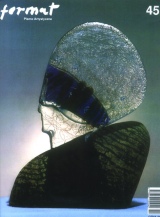Jean Rustin, malarz niepokoju moralnego
Jean Rustin, a painter of moral concern.
Author(s): Katarzyna Ruchel-StockmansSubject(s): Fine Arts / Performing Arts
Published by: Akademia Sztuk Pięknych im. Eugeniusza Gepperta we Wrocławiu
Summary/Abstract: Leonardo Cremonini (Italy), John Currin (America), Luc Tuymans (Belgium), Max Neumann (Germany) are interested in the human figure as the main motif in their art. Jean Rustin was born in 1928. From about 1975, up to the present, he concentrates on the same motif. It isn’t easy to understand his work. There are people who love his work, and there are people who hate it. It is impossible to adopt a moderate point of view. In 2004, there were several exhibitions of his paintings: in a town hall in Bagnolet near Paris, and in two galleries in Paris. Art critics, artists, and journalists tried to interpret his work during a discussion panel organized at the town hall. Some of them considered his work as traditional, and others said it was obscene. They compared his pictures to pictures by Francis Bacon and the dramas by Becket and Strindberg. Also, they found some resemblance with pictures by Lucien Freud, Balthus, and Zoran Music. Nevertheless, they agreed that Rustin is an original artist and there are many characteristics of his work which are unique. At the beginning of the 1970’s, Rustin was interested in abstraction. In 1994, for example, he painted a picture entitled ‘A Naked Woman with her Arms Spread’. She is shown standing on a chess-board-like floor. In 2002, he painted four hairless people dressed in identical aprons. A person standing at the right-hand side exposes his genitals. He often shows people in claustrophobic atmosphere of small, closed rooms. He leaves his models to themselves. There is no hope for them in those prison-like cells. The exhibitions were organized as a dramatic commentary to the Commune of Paris (1871). Rustin was interested in communism, and he lost his faith in that ideology as the result of tragic events in Hungary (1956) and in Prague (1968).
Journal: Format - Pismo artystyczne
- Issue Year: 45/2004
- Issue No: 03+04
- Page Range: 54/103
- Page Count: 2
- Language: Polish

